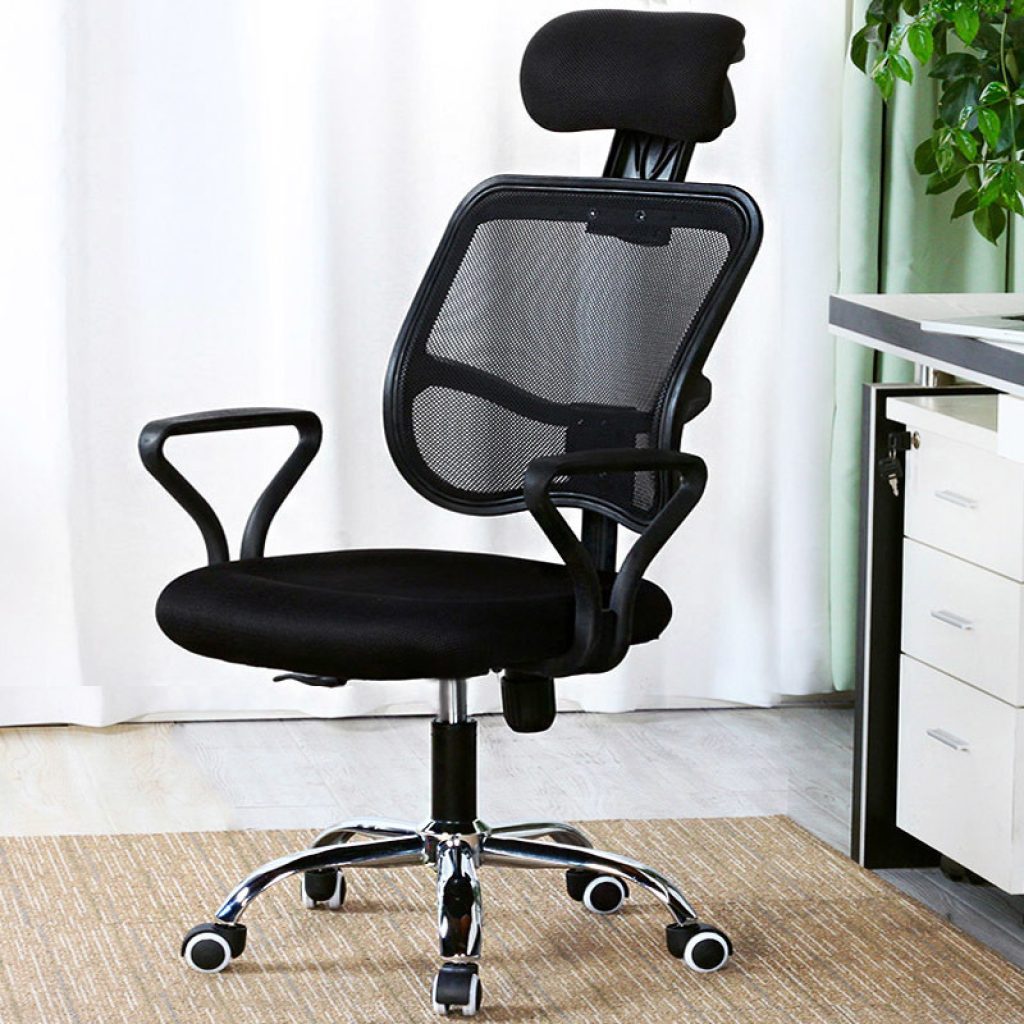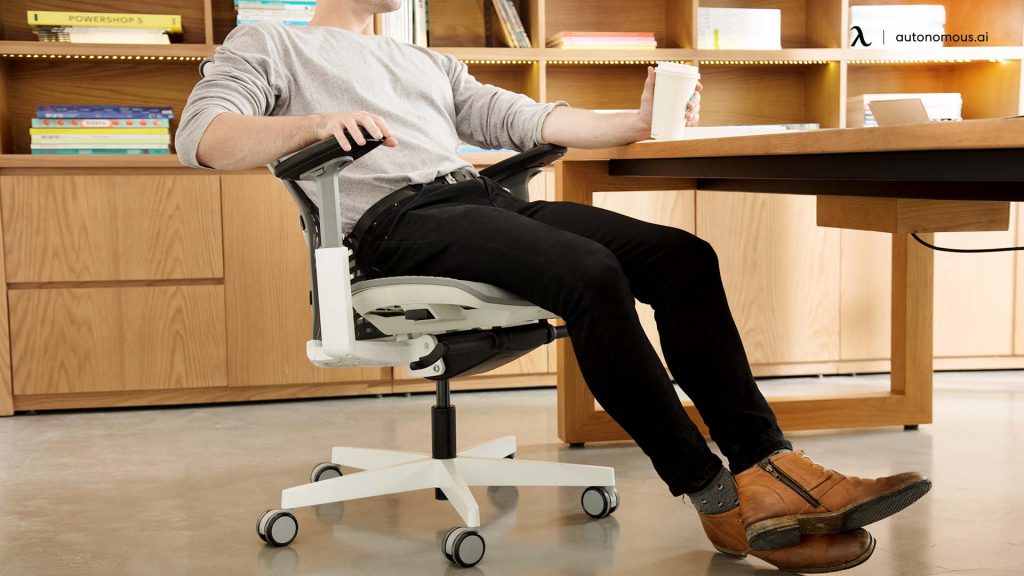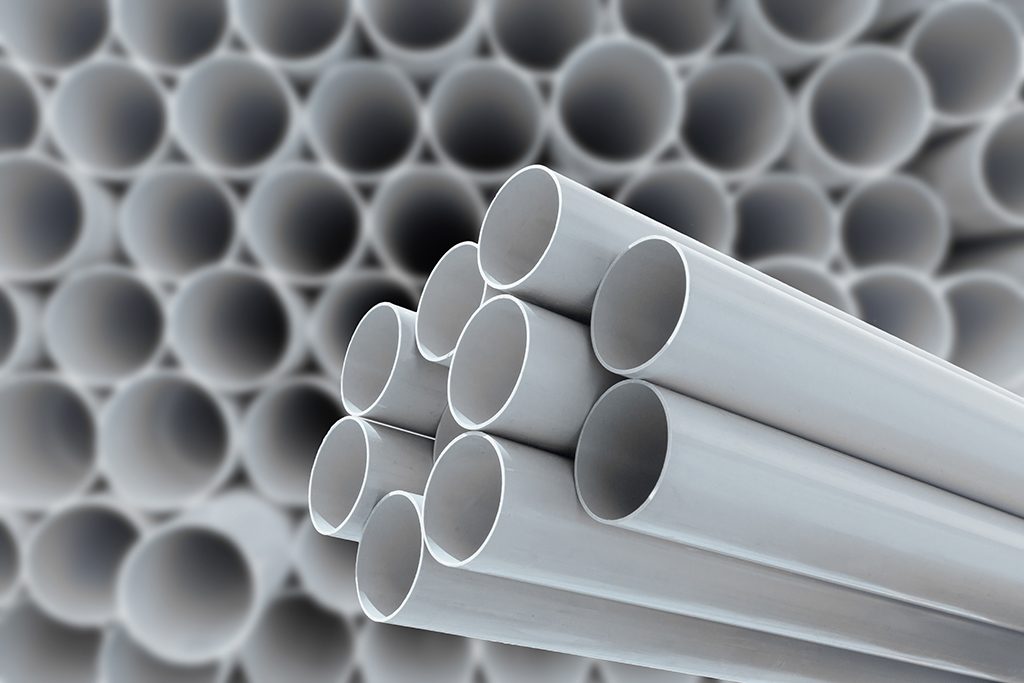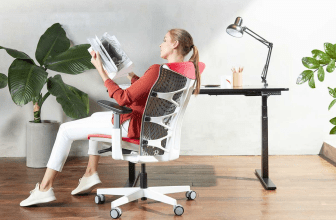Have you ever wondered why does my office chair sink?
When your office chair keeps sinking, it can be irritating and frustrating, not to mention extremely uncomfortable. Due to excessive fatigue and discomfort, such a chair can significantly reduce your productivity at work.
Through this article of FittingChairs, we will discuss the main reason why office chairs sink.
How Does an Office Chair Mechanism Work?
There are different types of office chair mechanisms available, but how does an office chair mechanism work?
Let’s find out each type of mechanism!
- Swivel-Only Mechanism
The Swivel-Only Mechanism is most commonly found on a sit/stand stool, where you alternate between sitting and standing on a regular basis. Laboratories, industries, and salons are all good examples.
- Swivel And Tilt Office Chair Mechanism
This mechanism works on all office chairs that have a continuous seat and backrest. The seat and backrest in these chairs cannot be adjusted separately and will always move in the same direction.
The pivot point for these systems is typically located in the seat’s center. This implies that if you lean back in your chair, the front edge of the seat will tend to pull your feet upwards, increasing the pressure on your thighs’ undersides.
- Frontal Pivot Mechanism
A Frontal Pivot or Knee-Tilt office chair mechanism is identical to a standard Swivel & Tilt, with the exception that the pivot point is closer to the front of the chair. As a result, the front of the seat is kept reasonably level by a wide-angle tilt.
When the chair tilts backward, unlike a traditional swivel and tilt mechanism, the frontal pivot does not increase pressure on the underneath of your thighs.
- Permanent Contact Mechanism
The backrest angle can be adjusted using a Permanent Contact or Back-Rake Mechanism. The seat’s angle is fixed at a horizontal position and cannot be adjusted.
Office chairs with a Permanent Contact mechanism are best suited for infrequent use and should not be used frequently.
- Synchronous Mechanism
Synchro mechanisms use a mechanical tilt to move the backrest and seat of the chair together in a fixed ratio.
The backrest’s movement must be larger than the seat’s movement in order for the synchro mechanisms to work.
Synchro systems typically feature a 2:1 ratio, meaning the backrest moves 2 degrees for every 1 degree of seat movement.
- Synchronous Frontal Pivot Office Chair Mechanism
A Synchronous Frontal Pivot mechanism combines the benefits of both a Frontal Pivot and a Synchronous mechanism to produce a superior result. This chair mechanism is excellent for heavy-duty professional use.
- Free-Float Mechanism
You can adjust the backrest and seat of the chair independently using a Free-Float or Multi-function mechanism. This allows you to precisely adjust the angle of the seat and backrest to get your ideal sitting posture.
The Components of An Office Chair
Why does my office chair sink because of its components? Let’s go into the components of an office chair to have a greater understanding.
- Seat Base

The base of an office chair is where you lay your buttocks. This is typically padded with soft paddings, allowing you to sit on the chair for long periods of time without discomfort.
Depending on the chair, the size of the base will vary. It’s a good idea to choose one that’s wider and made of softer materials for increased comfort.
- Backrest

Most office chairs include backrests to support your back as you sit at your workstation.
Backrests are designed in a way that prevents you from slouching. The backrest’s center usually protrudes forward to support your lumbar and force you into an upright position.
They are additionally padded, either with foam or with soft mesh.
- Armrests

Armrests are essential if you sit in front of a computer during the day. If you keep your hands on your desk for the majority of the day without armrests, you will put a lot of strain on your shoulders and upper back.
Get an office chair with armrests to reduce shoulder and upper back strain. Adjust the height of your armrests to match the height of your desk. This is the most comfortable position.
- Neck Support

Neck supports are more commonly found in higher-priced office chairs, executive seats, and gaming chairs. They are also available as separate attachments.
When you want to sit back and relax in your office chair, they provide added comfort. They also keep your neck from straining when you’re sitting in your office chair for long periods of time.
- The Base

The base of the chair is where the casters are installed. A star-shaped base with five arms connected to the center is the most common type of base.
A caster or wheel is located at the end of each of these arms. These go into the wheel base’s plastic sockets.
- Gas Lift

The gas lift is the heart of each office chair. The entire chair is designed around this gas cylinder. It is what permits the height to be simply and smoothly modified with the touch of a lever.
How Does a Gas Lift Cylinder Work?
Before we move on to the reason “why does my office chair sink”, let’s discuss how a gas lift cylinder works.
Below are the steps of working a gas lift cylinder:
- Step 1
The pressure of the gas stored in the cylinder is initially larger than the combined impact of atmospheric pressure and pressure owing to the weight of the upper half of the empty chair.
As a result, the gas spring reaches its maximum height.
- Step 2
When a person sits in the chair and presses the lever, the lock is unlocked, allowing the piston to move freely.
- Step 3
Now, the combined downward force includes the person’s weight, which is greater than the force due to nitrogen pressure.
As a result of the net downward force, the piston advances inside the cylinder, compressing the gas along the route. That is the hissing sound you are hearing.
- Step 4
The pressure of the gas rises as it is compressed, providing more resistance to the net downward force.
- Step 5
As the piston move, the user can lock the lever at any point.
Why Does My Office Chair Sink?
After we’ve gone through how a gas lift cylinder works, the question now is “why does my office chair sink”.
If your new or old office chair begins to sink for no specific reason, it is not necessarily damaged. The chair’s lifting capability has been gone. Here is “why does my office chair sink”.
A pneumatic cylinder is often used in office chairs to control the height of the chair using pressured air. It’s the component of the chair that connects the base and the seat together.
A properly functioning cylinder allows you to effortlessly change the chair’s height up and down.
Nitrogen Gas is contained within. When you use the lever to modify the chair, the nitrogen gas inside the chambers switches, allowing you to adjust it up and down.
However, the cylinders frequently fail after several years of usage because the seals are usually too worn out and broken to retain sufficient pressure.
The cylinder’s valve seal gradually begins to leak. These components wear out, causing office chairs to sink when sitting on.
How to Fix a Sinking Office Chair
As the above-mentioned reason, you also have the answer to the question “why does my office chair sink?”
There are two common methods to fix a sinking office chair. Let’s get started to explore them!
Method 1: Using a Hose Clamp

- Slide the plastic skirt off the cylinder
- Adjust the chair to your favorite height
- Wrap the cylinder with a hose clamp
- Improve the clamp’s grip
- Tighten the clamp as much as you can
- Test the chair
Method 2: Using PVC Pipe

- Measure the cylinder of your chair
- Purchase a length of PVC pipe
- Cut a lengthwise slit in the PVC pipe
- Snap the pipe onto the chair cylinder
- Add extra pipe to adjust the chair’s height
FAQs
Can You Fix The Office Chair Won’t Stay Up?
Of course, you can fix it. A hose clamp is one of the most typical methods for fixing an office chair. It’s simple, inexpensive, and can be done in just a few minutes at home – you don’t even have to remove the office chair.
There are other options, such as using a PVC pipe, but many people prefer the hose clamp.
When Should You Get A New Office Chair?
Here are 5 signs you need a new office chair:
- It’s old
- It looks worn
- Your body aches
- It’s missing lumbar support
- Your sitting posture is extremely uncomfortable
See more:
- Fix Your Sinking Office Chair in Minutes with 3 Proven Method
- Step-by-step Guide on Replacing Office Chair Cylinder
- Apply These 6 Methods to Adjust Office Chair Seat Angle
- 4 Life-saving Tips for Fixing an Office Chair That Leans Back
To conclude, we’ve already provided you with the reasons for the question “Why does my office chair sink?”. We hope you find it useful and share it with your friends. Leave your comment in this section below if you have any questions about this article of FittingChairs.






